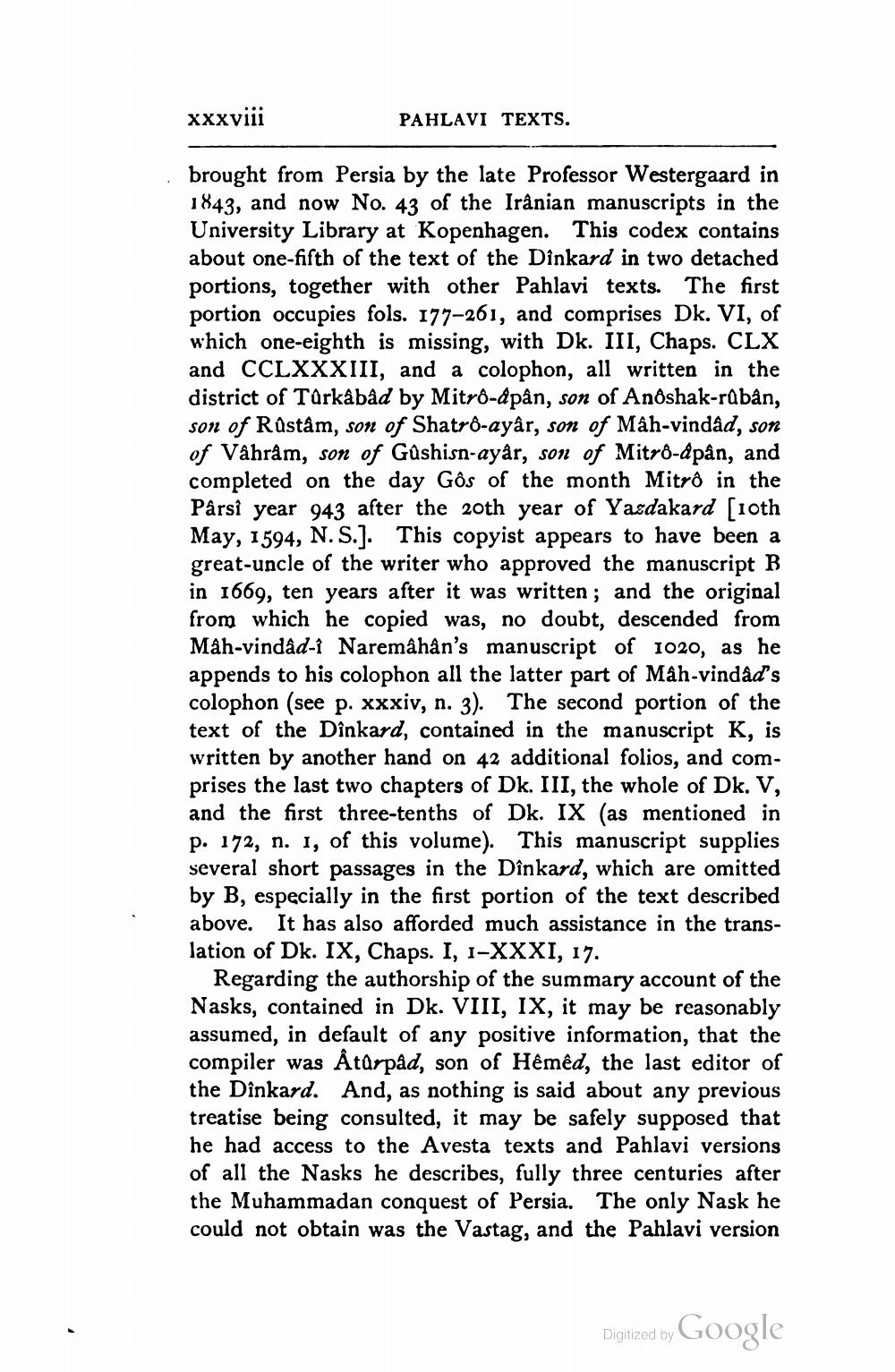________________
xxxviii
PAHLAVI TEXTS.
brought from Persia by the late Professor Westergaard in 1843, and now No. 43 of the Irânian manuscripts in the University Library at Kopenhagen. This codex contains about one-fifth of the text of the Dinkard in two detached portions, together with other Pahlavi texts. The first portion occupies fols. 177-261, and comprises Dk. VI, of which one-eighth is missing, with Dk. III, Chaps. CLX and CCLXXXIII, and a colophon, all written in the district of Türkâbâd by Mitrô-dpân, son of Anôshak-rabân, son of Růstâm, son of Shatrô-ayâr, son of Mâh-vindâd, son of Vâhram, son of Gashisn-ayår, son of Mitrô-åpân, and completed on the day Gôs of the month Mitrô in the Pårsî year 943 after the 20th year of Yazdakard (ioth May, 1594, N. S.]. This copyist appears to have been a great-uncle of the writer who approved the manuscript B in 1669, ten years after it was written ; and the original from which he copied was, no doubt, descended from Mâh-vindad-i Naremâhân's manuscript of 1020, as he appends to his colophon all the latter part of Mâh-vindad's colophon (see p. xxxiv, n. 3). The second portion of the text of the Dînkard, contained in the manuscript K, is written by another hand on 42 additional folios, and comprises the last two chapters of Dk. III, the whole of Dk. V, and the first three-tenths of Dk. IX (as mentioned in p. 172, n. 1, of this volume). This manuscript supplies several short passages in the Dînkard, which are omitted by B, especially in the first portion of the text described above. It has also afforded much assistance in the translation of Dk. IX, Chaps. I, 1-XXXI, 17.
Regarding the authorship of the summary account of the Nasks, contained in Dk. VIII, IX, it may be reasonably assumed, in default of any positive information, that the compiler was Åtorpåd, son of Hêmêd, the last editor of the Dinkard. And, as nothing is said about any previous treatise being consulted, it may be safely supposed that he had access to the Avesta texts and Pahlavi versions of all the Nasks he describes, fully three centuries after the Muhammadan conquest of Persia. The only Nask he could not obtain was the Vastag, and the Pahlavi version
Digitized by Google




